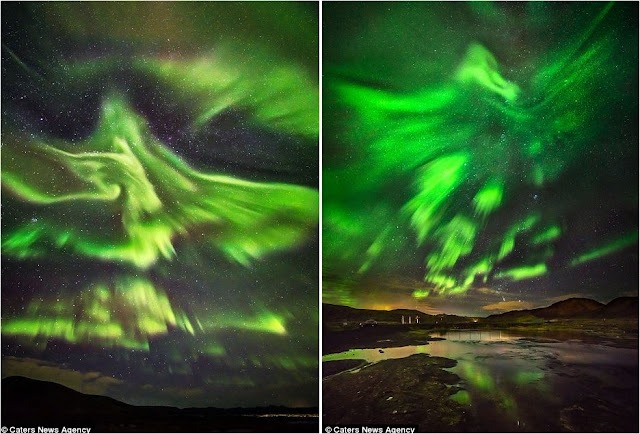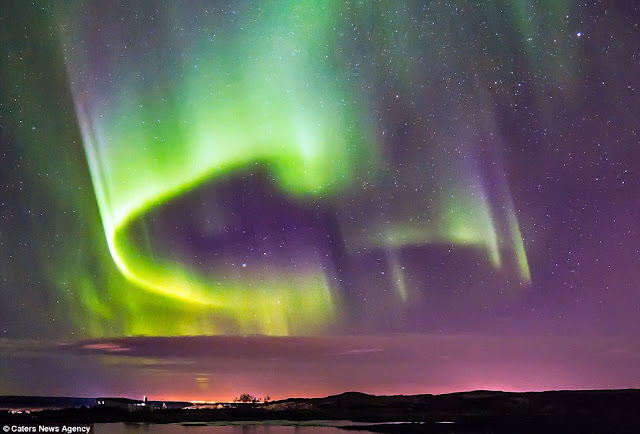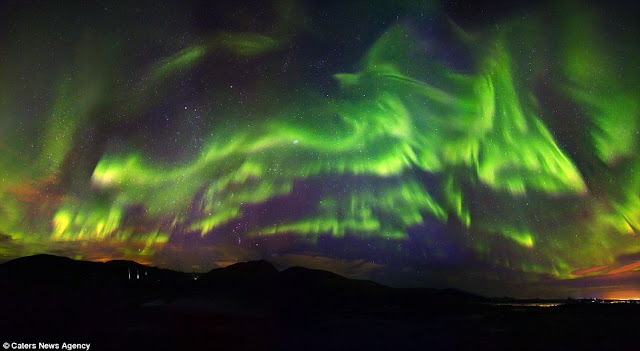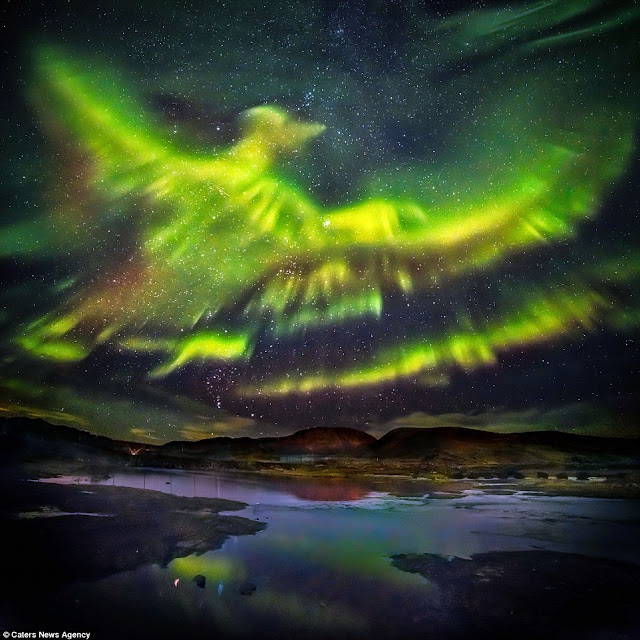
These stunning images of the aurora borealis captured the moment the lights formed the silhouette of a phoenix – the mythological huge fire-eating bird.
The image, obtained by photographer Hallgrimur P Helgason, impressed Kaldarsel residents with its spread wings and distinctive bird-shaped features.
Mr Helgason, 64, said the bird appeared in the night sky an hour after he arrived and began clicking photos.
‘It’s truly a delight shooting the aurora, especially when they’re as mischievous as they were that night,’ he said. I have to say that when the lights explode out like that, it always gives me a rush – that particular shot was the best of the night.’
He photographs the lights with a camera and tripod, and he recommends shooting in the dark, away from city light pollution, and never using a flash.
He stated the Northern Lights were mostly green and yellow as he was photographing that night, but they were also red and blue, indicating a strong aurora.

The Northern Lights play an important role in Norse mythology. According to one mythology, the lights were reflections or glows from the Valkyrie’s shields and armour, feminine fighters who chose who would die in battle and who would live to fight another day. Dying in combat seems to fill a lot of Norse mythology, and the Aurora was also thought to be “Bifrost Bridge,” a blazing and pulsating arch that led the warriors’ last resting place in Valhalla.

The Saami indigenous people think that these lights are their ancestors paying them a visit. The northern lights were understood as the dancing of human spirits by the Salteaus Indians of eastern Canada and the Kwakiutl and Tlingit of Southeastern Alaska. The Inuits of the Yukon River’s lower reaches thought that the aurora was the dance of animal spirits, particularly those of deer, wolf, seals, salmon, and beluga. In Finland, the aurora was said to have been created by a supernatural fox, whose bushy tail sprayed snow and threw lights into the sky.




Leave a Reply